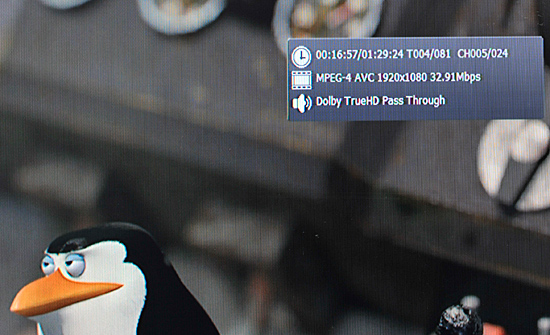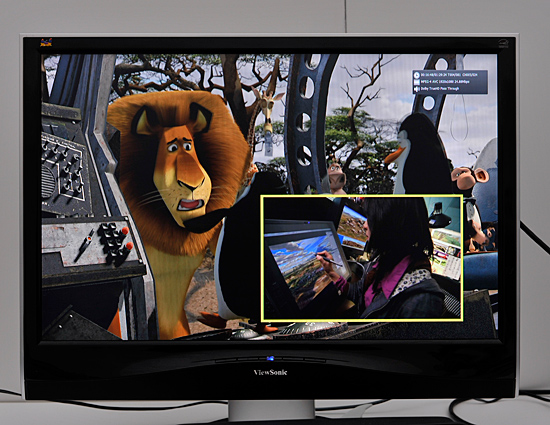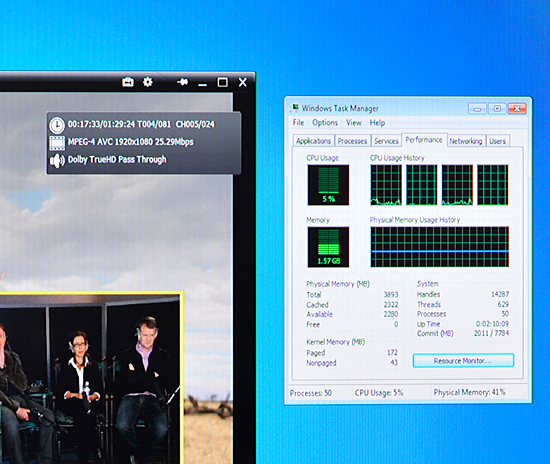The Real Conroe Successor: Clarkdale & All You Need to Know about Westmere
by Anand Lal Shimpi on September 24, 2009 6:00 PM EST- Posted in
- CPUs
Bitstreaming TrueHD/DTS-HD MA: Yep, Here too
The Radeon HD 5870 was the first graphics card to properly support bitstreaming of high definition Blu-ray audio codecs. Clarkdale/Arrandale is the second.
These CPUs come with an on-package GPU and that GPU supports the appropriate protected audio path to enable bitstreaming of Dolby TrueHD and DTS-HD MA. Of course 8-channel LPCM output is also still an option.
If you remember the G45 launch, Intel had serious issues enabling 8-channel LPCM output, HDCP and H.264 decode acceleration in general. I grilled Intel on what was going to make this round different and they are much more confident in their abilities.
They've increased the number of receivers they test with (originally it was at a whopping two, now they're up to…7). They've also expanded their test scenarios as well. The combination of the two, Intel believes, will result in a fully functional set of HTPC features at launch.
The first time I went by Intel's Clarkdale demo, Intel couldn't get bitstreaming working. A day later I got an email telling me to drop by again - they fixed it.

I got to see TrueHD bitstreaming from a Clarkdale system to a Sony receiver. I also confirmed that full two stream decode acceleration was working:

Intel had it working with Arcsoft's player, but is working with all of the major software vendors to hopefully enable full support on everything. Intel does seem to be taking this much more seriously than with G45.

The Clarkdale launch is still a couple of months away so there is definitely time for Intel to work out the kinks.
This is a serious feature. The fact is that in a couple of years every single PC shipped will have the ability to bitstream these audio codecs without any additional hardware. We're finally getting there folks.










96 Comments
View All Comments
Penti - Friday, September 25, 2009 - link
No IGP is good enough for gaming either way. It's a laptop/low end desktop chip. So it's good enough. And you still have a x16 PCI-e slot.ereavis - Tuesday, October 6, 2009 - link
exactly. I'd estimate at least 4000 PCs in this building and guess that 95% or more of them would love this processor. Compiling software, running electrical engineering hardware simulations (when you leave open dedicated crunching servers for the big tasks) need the best processing available. Low end IGP is perfect for displaying the results, reading email, and other office tasks. Big companies doing bulk buys are aiming for low power without sacrificing performance. The gaming market drives video cards, not IGPs.Having said all that, I'd want my living room computer playing movies to support some gaming, but I'll sacrifice the case size for that.
TA152H - Thursday, September 24, 2009 - link
I'm horrified by the idea of them moving the memory controller off the CPU and onto the GPU. What the Hell are they thinking? I was very much looking forward to this product, but like every Intel product, they find a way to marginalize it. Why not just leave the memory controller on the CPU die? Not everyone, especially people buying this platform, care about graphics performance, but, everyone uses a CPU.It's just so strange.
vshin - Friday, September 25, 2009 - link
You really shouldn't advocate Gulftown or Clarkdale over Lynnfield any more. There may actually be people who were swayed by your posts and now you've done them a disservice.For the budget enthusiast PC gamer who is upgrading from a C2D system or older, the best Intel CPU will be Lynnfield until Sandy Bridge. Gulftown will debut at $1000 and the current Bloomfield isn't significantly better to justify the extra cost for this segment. The X58 platform is basically a dead-end money pit. But hey, if all you do is fold proteins and encode video, then stick with it.
Clarkdale isn't "the answer" either. I'm surprised Anandtech is calling this the spiritual successor to Conroe. It most certainly is not. This is a CPU for the HTPC market and LAN party builders. Maybe grandma would like Clarkdale too. You call Lynnfield crippled (which is true) but Clarkdale is half a Lynnfield with an obsolete (no DX11) IGP stapled onto its back.
TA152H - Friday, September 25, 2009 - link
Based on what? You're unqualified opinion? You've offered zero evidence.From what I've seen, there's no upgrade for the Lynnfield. The only option is a dual core, which would qualify as a downgrade.
On the other hand, there is an upgrade for the x58. So, what deranged thinking are you suffering from by thinking this validates someone buying a P55 more than before, when there's even less of an upgrade path.
Not that the Gulftown is going to be feasible in the near future, it's just the P55 shows even worse upgradeability.
vshin - Friday, September 25, 2009 - link
Wrong. X58 doesn't have a viable upgrade path if Gulftown will start at $1000. At least the P55 is cheaper and has the option to drop in a 32nm Lynnfield later on.jordanclock - Friday, September 25, 2009 - link
Could you provide some evidence that this will have a real-world impact on performance? Besides, the market segment this processor is aimed at will almost always be using integrated graphics. For those few cases where it won't be used, I'm sure it will be a simple matter of plugging your monitor into your discrete video card and the usual changes one makes when using a discrete card on an integrated motherboard.jonGhast - Friday, September 25, 2009 - link
You also think going from 3 channel memory to 2 channel for Lynnfield was a horrible idea, despite plenty of evidence that it doesn't really matter.Can't we just agree that you don't really know what you're talking about, and move on?
TA152H - Friday, September 25, 2009 - link
What kind of an idiot are you?There are very real differences between the Lynnfield and the Bloomfield. Didn't you read Anand's apple to apple comparison? Can you read at all?
I think we can agree you're an idiot, and move on.
KaarlisK - Friday, September 25, 2009 - link
Actually, the impact from this will be higher. Memory latencies will be on the level of Core2 instead of Bloomfield/Lynnfield - basically, you're losing the IMC.